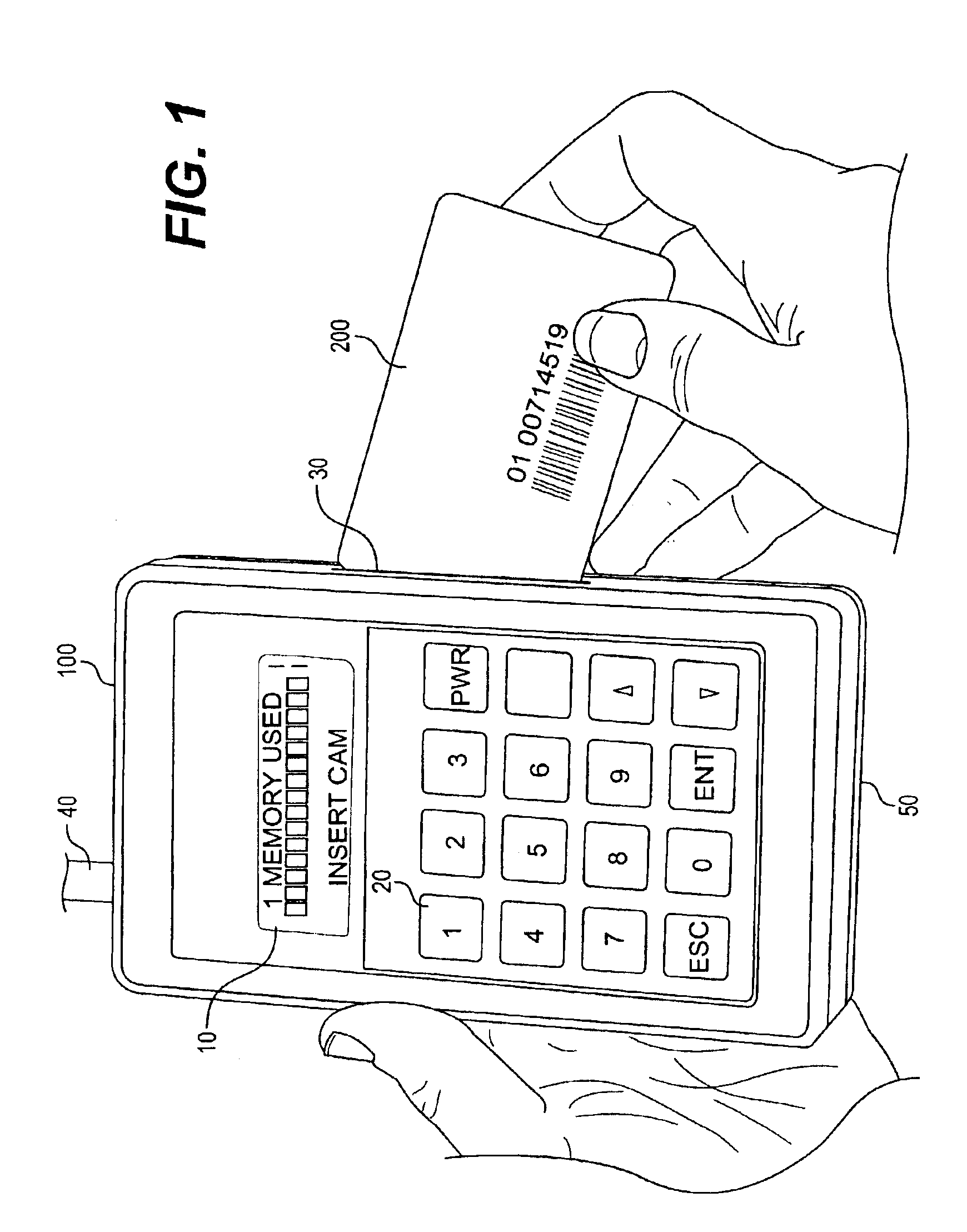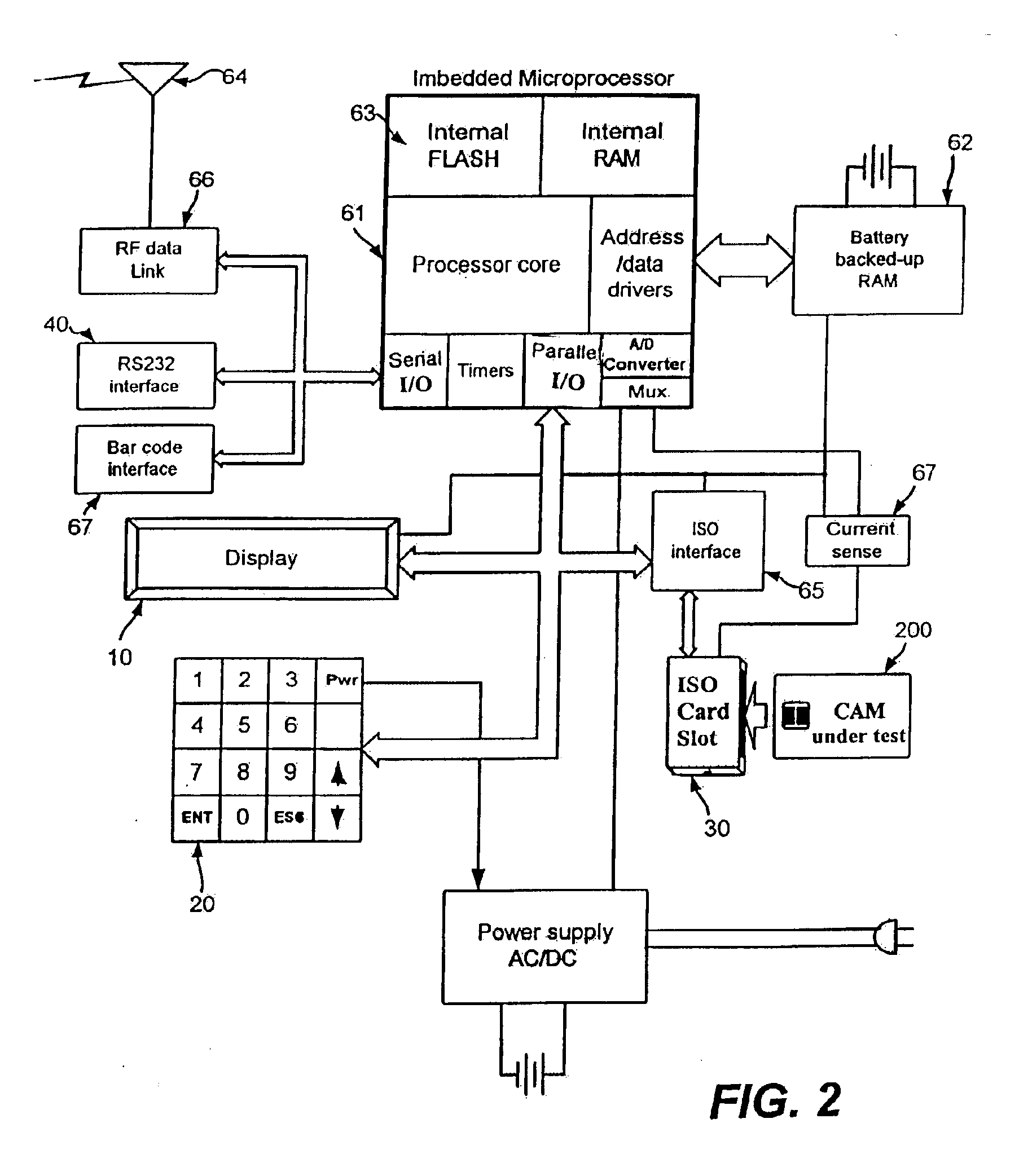System for testing, verifying legitimacy of smart card in-situ and for storing data therein
a smart card and data storage technology, applied in the field of system for testing and verifying the legitimacy of smart cards, can solve the problems of millions of smart cards, commercial pirates costing the digital tv industry hundreds of millions of dollars, and the general vulnerability of smart cards
- Summary
- Abstract
- Description
- Claims
- Application Information
AI Technical Summary
Benefits of technology
Problems solved by technology
Method used
Image
Examples
Embodiment Construction
[0026]With reference to the figures, like reference characters will be used to indicate like elements throughout the several embodiments and views thereof. FIG. 1. The CAMID™ 100 as shown in FIG. 1 is a stand-alone, battery-operated, hand-held device for interrogating any ISO 7816 compliant Conditional Access Module (CAM) 200. The CAMID™ 100 allows investigators to immediately sort CAMs by category, i.e., valid, defective, or tampered. During the interrogation, data is collected and sorted without additional hardware (stand-alone). The CAMID™ 100 comprises a LCD screen 10, a key pad 20, a CAM slot 30, an antenna 64, a housing case 50, and a microprocessor 61. FIG. 2 shows the CAMID™ 100 and the component blocks of the microprocessor 61, including a battery backed-up RAM 62, a flash memory 63, a RS-232 port 40, an ISO card port 30, Bar code interface 67, a current processing means (not shown), etc. The CAMID™ 100 is battery-powered, and it instantly displays CAM information as direct...
PUM
 Login to View More
Login to View More Abstract
Description
Claims
Application Information
 Login to View More
Login to View More - R&D
- Intellectual Property
- Life Sciences
- Materials
- Tech Scout
- Unparalleled Data Quality
- Higher Quality Content
- 60% Fewer Hallucinations
Browse by: Latest US Patents, China's latest patents, Technical Efficacy Thesaurus, Application Domain, Technology Topic, Popular Technical Reports.
© 2025 PatSnap. All rights reserved.Legal|Privacy policy|Modern Slavery Act Transparency Statement|Sitemap|About US| Contact US: help@patsnap.com



